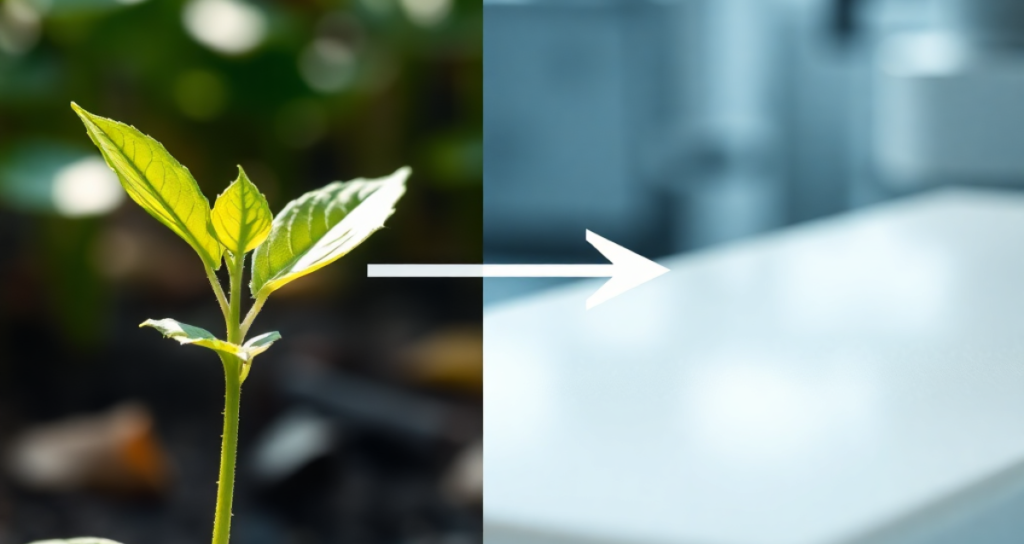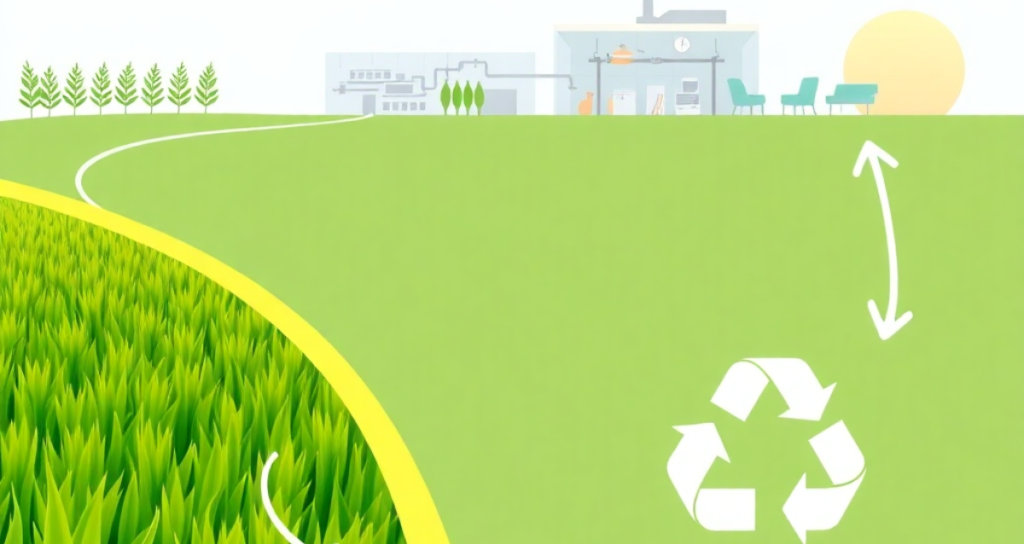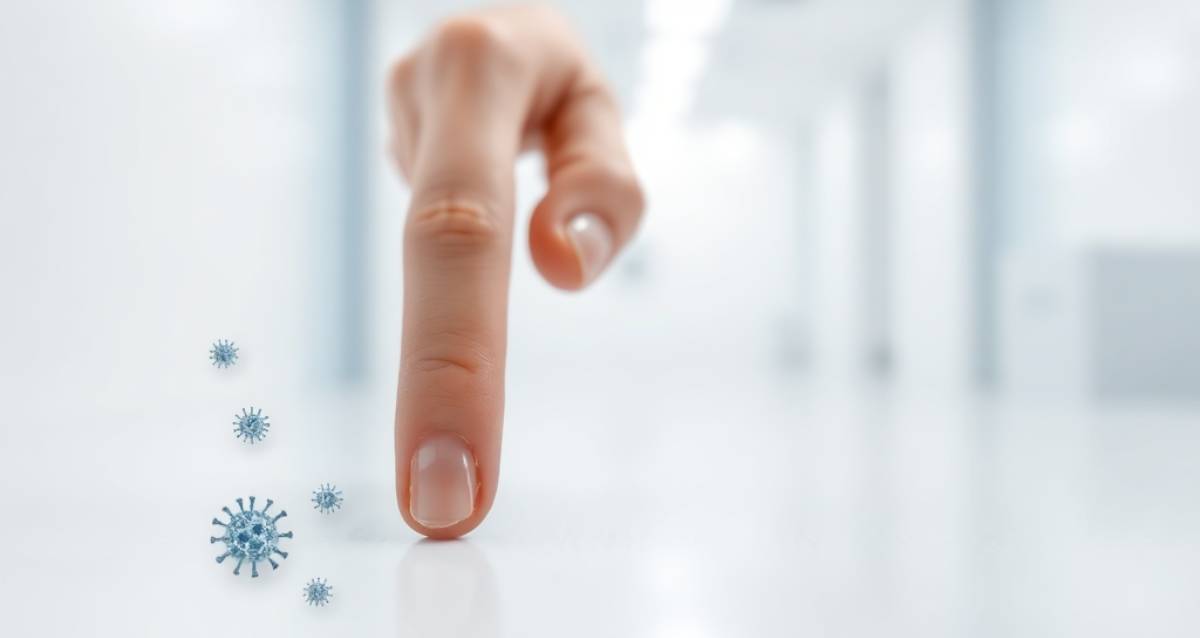Microbial contamination poses significant challenges across various sectors. Polyurethane antimicrobial technology offers a powerful solution by incorporating antimicrobial properties into polyurethane materials. This innovative approach enhances hygiene and safety in diverse settings, from healthcare facilities to public spaces. The versatility and durability of polyurethane make it an ideal platform for these technologies, enabling the creation of cleaner, safer, and more hygienic environments.
Table of Contents
Unveiling Polyurethane: A Versatile Material
Polyurethane is a powerhouse material known for its durability, flexibility, and versatility. Due to its exceptional resistance to wear and tear, this synthetic polymer is used across industries, from construction to consumer goods. Beyond its traditional applications, polyurethane is now crucial in advancing antimicrobial technologies.
As a foundation for antimicrobial solutions, polyurethane offers unique advantages. Its customizable structure allows the integration of antimicrobial agents, creating surfaces that resist microbial growth. This innovation has revolutionized hygiene standards in critical environments, making it a staple in combating pathogens effectively.
Polyurethane Antimicrobial Tech: How It Works
Polyurethane antimicrobial technology incorporates a range of active agents that interfere with the vital functions of microorganisms
Inorganic Powerhouses: Metal ions like silver and copper are at the forefront of polyurethane antimicrobial technology. These metals disrupt microbial cell walls and inhibit their metabolism, effectively neutralizing bacteria, viruses, and fungi. Silver ions, for instance, bind to microbial DNA, halting replication and ensuring long-lasting protection.
Nature’s Defenders: Natural enzymes are another exciting component of antimicrobial polyurethane. These enzymes break down the structural components of microbes, rendering them inactive. Derived from nature, these agents provide a biodegradable and eco-friendly approach to hygiene.
Synthetic Shield: Synthetic antimicrobials embedded in polyurethane create a robust defence against pathogens. These chemical agents offer prolonged efficacy, even in challenging environments. By integrating these compounds into the polyurethane matrix, manufacturers ensure consistent performance over extended periods, reducing the need for frequent replacements.
Why Antimicrobial Polyurethane Matters
In an era of heightened awareness about hygiene and infection control, antimicrobial polyurethane emerges as a crucial technology with the power to transform various sectors.
Combating Infection Risks: In high-risk environments like hospitals, antimicrobial polyurethane is a game-changer. It minimizes infection risks by creating surfaces that actively resist microbial colonization. From medical devices to hospital furniture, this technology is critical in protecting patient health.
Elevating Hygiene Standards: Manual cleaning alone cannot achieve complete sanitation. Antimicrobial polyurethane complements cleaning efforts by providing an additional layer of protection. Its ability to inhibit microbial growth ensures superior hygiene in public spaces and private settings alike.
Durability and Cost-Effectiveness: Antimicrobial polyurethane is built to last. Its long-lasting protection reduces the need for frequent replacements and intensive cleaning, saving both time and money. This durability makes it an economical choice for industries seeking reliable hygiene solutions.
Addressing Post-Pandemic Concerns: The COVID-19 pandemic highlighted the importance of robust hygiene measures. As a result, there is an increased demand for antimicrobial technologies like polyurethane. Its proven efficacy in reducing microbial spread makes it a vital tool in post-pandemic hygiene strategies.
Polyurethane Antimicrobial Tech in Action
The versatility of polyurethane antimicrobial technology is evident in its widespread adoption across various sectors, revolutionizing how we approach hygiene and infection control.
Healthcare Innovations: In healthcare, antimicrobial polyurethane is used in medical devices, implants, and hospital equipment. For instance, catheter coatings made from this material reduce the risk of infections, while antimicrobial surfaces on hospital beds enhance patient safety.
Consumer Goods Revolution: Everyday items are being transformed with antimicrobial polyurethane. From textiles and kitchenware to personal care products, this technology ensures safer, cleaner products for consumers.
Safeguarding Food and Beverage: In the food industry, antimicrobial polyurethane is essential for maintaining hygiene. It is used in food packaging, processing equipment, and surfaces in food service environments. By preventing microbial contamination, it helps ensure food safety and extends shelf life.
Protecting Public Spaces: Hotels, restaurants, and public transportation benefit significantly from antimicrobial polyurethane. High-touch surfaces like countertops, handrails, and seating areas are now safer, thanks to this technology. Its ability to maintain cleanliness in busy environments is unparalleled.
Industrial Advancements: Industries such as construction and manufacturing are leveraging antimicrobial polyurethane to enhance safety and efficiency. This technology is driving innovation across sectors, from protective coatings on machinery to antimicrobial flooring in factories.
Eco-Conscious Evolution of Polyurethane Antimicrobial Technologies

In an era of heightened environmental awareness, the development of eco-conscious polyurethane antimicrobial technologies is crucial for a sustainable future.
- Shifting Towards Sustainability: The growing demand for eco-friendly solutions is driving a significant shift within the Polyurethane Antimicrobial Technologies sector. Manufacturers are actively developing bio-based formulations, utilizing renewable resources as raw materials to reduce reliance on petroleum-based chemicals.
- Minimizing Environmental Footprint: Embracing circular economy principles, the industry is prioritizing the development of recyclable Polyurethane Antimicrobial Technologies. Efficient recycling processes are being implemented to minimize waste generation and reduce the environmental impact of end-of-life products.
- Clean Air Advantage: Advancements in low-VOC (Volatile Organic Compound) polyurethane formulations are playing a crucial role in improving air quality. By significantly reducing harmful emissions, these technologies contribute to a healthier environment and mitigate the potential for air pollution associated with traditional polyurethane production and application.
Navigating the Regulatory Landscape for Polyurethane Antimicrobial Technologies
The development and commercialization of polyurethane antimicrobial technologies must navigate a complex regulatory landscape to ensure safety and environmental compliance.
- Compliance Challenges: Strict environmental regulations pose significant challenges to the development and implementation of Polyurethane Antimicrobial Technologies. These regulations often limit the use of certain chemical additives to minimize potential environmental and human health risks.
- Innovation as a Solution: To navigate this regulatory landscape, manufacturers are proactively developing innovative and sustainable solutions. Water-based systems, for example, offer a promising alternative by significantly reducing the reliance on volatile organic compounds (VOCs) while maintaining the efficacy of Polyurethane Antimicrobial Technologies.
Unlocking the Advantages of Polyurethane Antimicrobial Technologies
Polyurethane antimicrobial technologies aren’t just great for hygiene they also bring sustainability advantages.
- Exceptional Durability and Longevity: Polyurethane Antimicrobial Technologies exhibit exceptional durability, withstanding harsh conditions and maintaining their antimicrobial properties over extended periods. This longevity translates to reduced maintenance costs and a longer lifespan for treated surfaces.
- Versatility and Adaptability: The inherent versatility of polyurethane enables its seamless integration across a wide spectrum of applications. From medical devices and healthcare settings to consumer products and industrial settings, Polyurethane Antimicrobial Technologies offer adaptable solutions to diverse antimicrobial challenges.
- Enhanced Safety and Human Health: Polyurethane Antimicrobial Technologies are designed with human health and safety in mind. Many formulations are non-toxic and safe for use in sensitive environments, minimizing potential risks to occupants and healthcare workers.
- Cost-Effectiveness and Long-Term Value: The long-lasting antimicrobial protection provided by Polyurethane Antimicrobial Technologies significantly reduces the need for frequent cleaning, disinfection, and replacement. This translates into substantial cost savings over the long term.
- Sustainability and Green Building Practices: The development of eco-friendly Polyurethane Antimicrobial Technologies, such as those utilizing bio-based materials and incorporating sustainable manufacturing practices, aligns perfectly with green building principles and contributes to a more sustainable future.
Pushing the Boundaries: Innovations in Polyurethane Antimicrobial Technologies
The demand for antimicrobial innovations is growing. Here’s why polyurethane antimicrobial technologies are considered essential across industries.
- Nanotechnology-Driven Advancements: Nanotechnology is revolutionizing the field of Polyurethane Antimicrobial Technologies by enabling the creation of novel materials with enhanced antimicrobial properties. For example, nanotechnology empowers the development of mechanically antimicrobial PU-coated products. These innovative materials exhibit superior antimicrobial activity, making them crucial for critical environments such as hospitals and food processing facilities where infection control is paramount.
- Self-Healing Polyurethane: Enhancing Durability and Longevity: The emergence of self-healing polyurethane materials represents a significant breakthrough in the field of Polyurethane Antimicrobial Technology. These innovative materials possess the remarkable ability to repair minor damages, such as scratches or abrasions, thereby enhancing their durability and extending their lifespan.
This is particularly crucial for biomedical applications where maintaining the integrity and antimicrobial properties of implants and medical devices is critical.
Smart Paint Technology: Intelligent Antimicrobial Solutions: The integration of smart technology int is paving the way for intelligent and responsive solutions. Embedded sensors within smart paints can detect the presence of microbial contaminants and trigger appropriate responses, such as the release of antimicrobial agents or the activation of self-cleaning mechanisms. This proactive approach enhances the effectiveness of Polyurethane Antimicrobial Technologies and provides a new level of protection against microbial threats.
Open-Cell Foam Innovations: Enhancing Air Quality and Comfort: Advancements in open-cell foam technology have significantly expanded the applications of Polyurethane Antimicrobial Technologies. These foams offer excellent airflow while simultaneously providing effective antibacterial protection. This combination of properties is revolutionizing the design and functionality of bedding, furniture, and air filtration systems, creating healthier and more comfortable living and working environments.
Durability Testing and Performance Optimization: Ongoing research and development efforts are focused on improving the long-term durability and performance of Polyurethane Antimicrobial Technology. Rigorous durability testing protocols are employed to evaluate the wear resistance and retention of antimicrobial properties over time. This data-driven approach informs the design and optimization of Polyurethane Antimicrobial Technology, ensuring its continued effectiveness and reliability in real-world applications.
Scalable Production for Sustainable Growth: The successful commercialization of Polyurethane Antimicrobial Technology requires efficient and scalable manufacturing processes. Innovative production techniques are being developed to ensure consistent quality and performance across large-scale production runs while meeting the stringent regulatory requirements of various industries. This focus on scalable production will enable the widespread adoption of Polyurethane Antimicrobial Technology and drive sustainable growth within this dynamic sector.
The Future of Polyurethane Antimicrobial Tech

The future of Polyurethane Antimicrobial Technology hinges on a commitment to sustainability and innovation. A key focus lies in minimizing environmental impact by prioritizing the use of eco-friendly materials and exploring circular economy principles. This includes:
- Bio-based Polyurethanes: Utilizing renewable resources like plant oils and agricultural byproducts to replace petroleum-based feedstocks in polyurethane production.
- Recyclable Polyurethane Formulations: Developing polyurethane formulations that are easily recyclable at the end of their lifecycle, reducing waste and minimizing environmental impact.
- Life Cycle Assessment: Conduct thorough life cycle assessments to evaluate the environmental impact of Polyurethane Antimicrobial Technology throughout their entire lifecycle, from raw material extraction to end-of-life disposal.
Innovation Frontiers
Advancements in materials science and nanotechnology are poised to unlock new frontiers in Polyurethane Antimicrobial Technology.
- Nanotechnology: The integration of nanomaterials, such as silver nanoparticles, into polyurethane matrices, can significantly enhance antimicrobial properties. These nanomaterials offer high surface area-to-volume ratios, enabling efficient contact and inactivation of microorganisms.
- Smart Polymers: The development of “smart” polymers that can actively respond to environmental stimuli, such as changes in temperature or pH, offers exciting possibilities. These materials can release antimicrobial agents on demand, providing targeted and controlled antimicrobial activity.
- Biomimicry: Drawing inspiration from nature, researchers are exploring biomimetic approaches to develop novel Polyurethane Antimicrobial Technology. For example, incorporating antimicrobial peptides or mimicking the self-cleaning properties of natural surfaces can lead to innovative and sustainable solutions.
Overcoming Challenges
While the future of Polyurethane Antimicrobial Technology is promising, several challenges remain:
- Cost-Effectiveness: Ensuring the cost-effectiveness of these advanced technologies is crucial for widespread adoption.
- Scalability: Scaling up production of these innovative materials while maintaining consistent quality and performance is a critical challenge.
- Regulatory Compliance: Navigating the complex regulatory landscape and ensuring compliance with safety and environmental regulations is essential for bringing these technologies to market.
Addressing these challenges requires ongoing research and development, collaboration between academia, industry, and regulatory bodies, and a strong commitment to sustainability.
By embracing innovation, prioritizing sustainability, and addressing the challenges that lie ahead, we can unlock the full potential of Polyurethane Antimicrobial Technology and create a healthier, safer, and more sustainable future for all.
Conclusion
Polyurethane Antimicrobial Technology is revolutionizing how we approach hygiene and safety in the modern world. Its versatility and effectiveness are evident across a wide range of applications, from healthcare settings to everyday consumer products. By continuously advancing Polyurethane Antimicrobial Technology, we can create a safer and more hygienic environment for all. The future of Polyurethane Antimicrobial Technology holds immense promise, with ongoing innovation driving the development of more sustainable and effective solutions. As this technology evolves, it will play an increasingly crucial role in safeguarding public health and improving the quality of life for generations to come.
FAQs
What is antimicrobial polyurethane?
Antimicrobial polyurethane is a material infused with agents that inhibit the growth of microorganisms, providing long-lasting protection against pathogens.
How does antimicrobial polyurethane work?
It works by integrating antimicrobial agents, such as metal ions, natural enzymes, or synthetic compounds, into the polyurethane matrix, which actively neutralizes microbes on contact.
What are the benefits of antimicrobial polyurethane?
Its benefits include enhanced hygiene, durability, cost-effectiveness, and reduced infection risks in high-touch environments.

